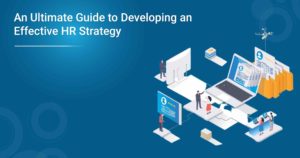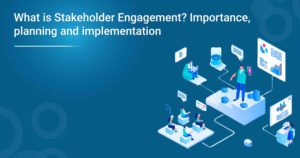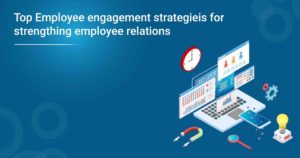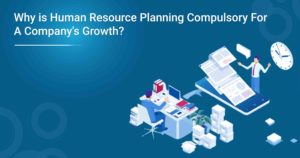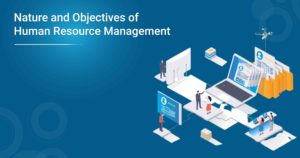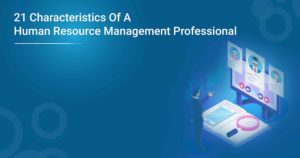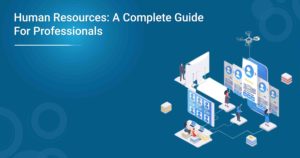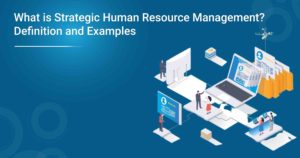Human resources management is the most important aspect of any business. It is not just responsible for recruiting, training, and managing employees; it is about much more. Learning the fundamentals of human resource management is essential to get through HR management. This blog will discuss some of the essential concepts in HRM.
“A study found that human resource management is one of the most important functions in any business.” – The Society for Human Resource Management (SHRM), 2017.
What Are The Primary Fundamentals Of Human Resource Management?
Fundamentals of human resource management help you perform your HR responsibilities effectively and efficiently. It encompasses various activities, which are as follows:
Planning: This is the most crucial step in any process. In the context of human resources management, planning involves setting goals and objectives and determining the best way to achieve them. You need to have a clear plan of what you want to accomplish before you can start working towards it.
Organising: Once you have a plan in place, the next step is to organise your resources. It includes allocating tasks, assigning roles and responsibilities, and creating a structure to help you achieve your goals.
Staffing: The next step is identifying the people who will help you achieve your goals. Staffing is one of the most critical aspects of human resources management, as it can make or break your company. It encompasses recruiting, selecting, and training employees.
Directing: Once you have the right people in place, you need to provide them with direction. It includes setting expectations, communicating goals, and giving feedback. Hence, it is essential to remember that employees are human beings and must be treated as such.
Controlling: The final step in the process is controlling your resources. Control is essential to ensure that your company is on track and achieving its goals. It includes monitoring progress, evaluating results, and taking corrective action when necessary.
While these are some of the crucial fundamentals of human resources, plenty of other concepts come under these fundamentals but hold just as much importance.
Also Read: Scope for Human Resource Management
Getting Up And Close With Key Fundamentals of Human Resource Management
Human resources management is vast and complex, but understanding the basics is essential to success. Let’s learn about the key fundamentals of HRM in detail and understand its benefits.
Succession Planning
One of the critical fundamentals of human resource management is succession planning. This process involves identifying and developing future leaders within an organisation. Succession planning is essential because it ensures a talent pool to draw from when senior leaders retire or leave the organisation. It also helps to develop a pipeline of talent, which can be used to fill future vacancies.
With succession planning, HR professionals can identify potential leaders and provide them with the opportunity to develop their skills. This process can also help to retain talent within an organisation, as employees are more likely to stay if they see latent advancement.
Example Of Succession Planning
An example of succession planning would be if a company identified an employee with the potential to be a future leader and provided them with additional training and development opportunities. It would help prepare the employee for a future leadership role and increase their loyalty to the company.
Recruitment And Selection
Recruiting and selecting employees is crucial to any organisation, as it can significantly impact its performance. The goal of recruitment and selection is to find the best possible employees for the organisation in terms of their qualifications and corporate ethics.
There are several ways to recruit and select employees, and the most effective approach will vary depending on the organisation’s specific needs. However, there are some key fundamentals that all organisations should keep in mind when designing their recruitment and selection processes.
- First, it is crucial to clearly define the organisation’s needs. What specific skills and qualifications are required for the positions?
- Second, the recruitment and selection process should be designed to identify candidates who have the potential to be successful in the organisation. It means looking beyond simply their qualifications and looking for signs that they will be a good fit with the organisation’s culture.
- Finally, the process should be fair and transparent. All candidates should be given equal opportunities to showcase their qualifications and abilities, and the selection process should be free of biases.
Example of Recruitment and Selection
The best way to find the most qualified candidates is to use various methods, including advertising, job fairs, and online job boards. Once you have a reserve of candidates, you will need to screen them to ensure they meet your qualifications.
Performance Management
As a manager, one of your key fundamentals is performance management. It involves setting expectations for employees and providing feedback on their progress. It’s important to be clear and concise when communicating expectations and give constructive and helpful feedback.
Performance management can be complex, but it’s essential to your team’s success. By taking the time to properly manage performance, you can ensure that everyone is working towards the same goals and that everyone is held accountable for their results.
There are a few different tasks involved in performance management.
- First, you’ll need to set expectations for employees. It means communicating what is expected of them and setting measurable goals.
- Next, you’ll need to provide feedback on their progress. It can be done through regular check-ins and performance reviews.
- Finally, you’ll need to hold employees accountable for their results. It means setting consequences for not meeting expectations and following through with them.
If you’re unsure where to start, plenty of resources are available to help you. For instance, our Post Graduate Certificate in Human Resource Management gives you a detailed insight into human resource management, strengthening your career. With a little effort, you can master performance management fundamentals and create a system that works for your organisation. Check out our PG certificate course now!
Learning And Development Process
As your business grows, keeping your employees up-to-date on the latest industry trends and best practices is essential. A learning and development process will help you do this, which every business should have in place.
These are a few important things to consider when creating a learning and development process:
- Make sure you’re clear on the objectives of the training. What do you want your employees to be able to do after they’ve completed the training?
- Choose the suitable format for the training. Will it be in-person, online, or a mix of both?
- Consider the delivery method. Will you use an instructor-led format, or will employees be able to complete the training at their own pace?
- Make sure you have a way to measure the results of the training. It will help you determine if the learning and development process is effective and if it needs to be tweaked.
Creating a learning and development process is an important part of a successful business. By following the tips above, you can ensure that your method is effective and helps your employees reach their full potential.
Compensation and Rewards
Compensation and rewards are essential fundamentals of human resource management, as they can motivate employees and help to retain talent. Competitive salaries and benefits can attract and retain the best employees. Furthermore, by providing incentives and recognition programs, companies can motivate employees to achieve their goals.
It is pivotal for employers to keep up with the market rates for salaries and benefits to remain competitive. Furthermore, employers should review their compensation and rewards programs regularly to ensure that they meet their employees’ needs.
Types of compensation and benefits for employees:
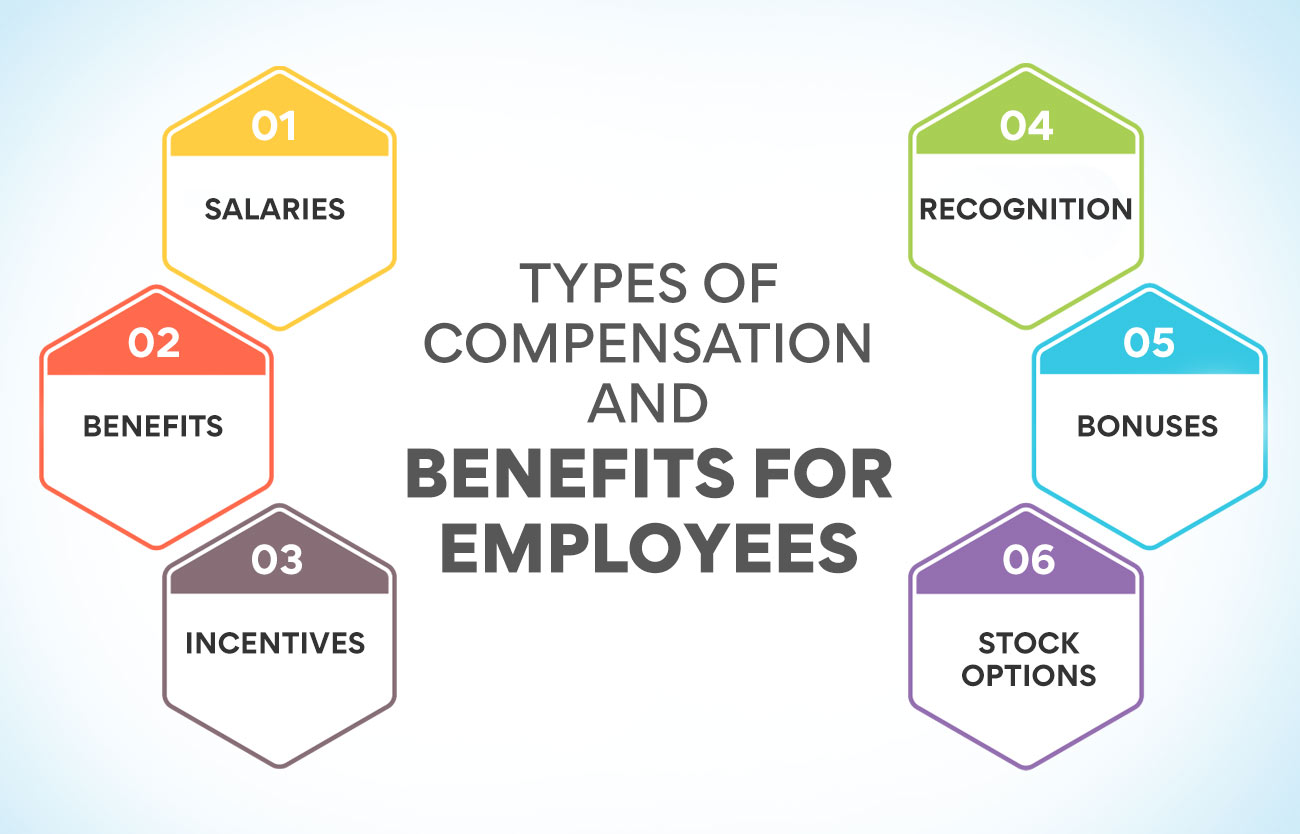
- Salaries: Base pay, bonuses, and commissions
- Benefits: Health insurance, retirement plans, child care assistance, and vacation days
- Incentives: Sales incentives, performance bonuses, and company stock options
- Recognition: Awards, trophies, and plaques
- Bonuses: Signing bonuses, referral bonuses, and performance-based bonuses
- Stock options: Employee stock ownership plans (ESOPs) and other stock options
- Other: Company cars, gym memberships, and tuition reimbursement
Employers can offer their employees many types of compensation and benefits. By providing a comprehensive package, employers can attract and retain the best candidates.
While designing a compensation and benefits package, employers should consider the following:
- What are the market rates for salaries and benefits?
- What are the needs of their employees?
- What type of package will attract and retain the best employees?
- How often should the package be reviewed?
Human Resource Analytics
Human resource analytics is a field of study that applies statistical analysis and data mining to employee-related data to improve HR decision-making. HR analytics can be used to predict future HR needs, identify trends in employee behaviour, and optimise HR processes. HR professionals should have a good understanding of HR analytics to make better use of data-driven decisions in their organisations.
One of the crucial fundamentals of human resource management is understanding how to use data to make better decisions. Human resource analytics is a perfect example of this. By analysing employee data, HR professionals can improve their decision-making in several ways.
If you’re looking to get started in human resource analytics, there are a few things you should keep in mind.
- First, it is essential to have a basic understanding of the basics of HR analytics; only you will be able to adequately utilise the data for the company’s advancement.
- Second, you’ll need access to all the employee data that will further help strengthen your decision-making process.
- And third, you’ll need to be able to use statistical analysis and data mining techniques to have the upper hand on the data flow.
If you’re looking for a more comprehensive guide on the fundamentals of human resource management, we recommend our Post Graduate Certificate in Human Resource Management. This PG certificate course covers everything from recruiting and hiring to onboarding and training. You’ll learn how to create an HR system that meets the needs of your business, employees, and customers.
Also Read: Key Objectives of Human Resource Management
What Are The Skills Required For An HR Professional?
The skills required for an HR professional vary depending on the size and nature of the organisation. However, there are key skills essential for all HR professionals, regardless of the industry they work in.
- Strong interpersonal skills
- Efficient communication and collaboration skills
- Proficient problem-solving skills
- Stringent decision-making abilities
- Strong analytical and problem-solving skills
- Ability to become proactive and initiative
- Persistent adaptive and capable nature
All these skills and more come together to give rise to well-equipped and qualified HR professionals who can bring a wave of development to the company.
The Bottom Line
In conclusion, the key fundamentals of human resource management are essential to consider when looking at how to manage your team effectively. It is an indispensable component of a successful company and should be given the attention it deserves. You can create a more effective and efficient workplace by considering these fundamentals.
Human resource is a rewarding career that offers plenty of challenges and opportunities for those interested in pursuing it. It will work as a great launch pad for those wanting to advance in their career. You can be an excellent human resource manager with the right skills and knowledge.
If you are thinking about a career in human resource management, consider taking time to learn about the key fundamentals. It will take you closer to being successful in HR activities once you understand the fundamentals.
Want to learn about human resource management in detail or how to kickstart a career in human resources? We have got a post-graduate certificate course that is just for you. Whether for a beginner or a professional, our PG course is for everyone. Now learn at your convenience and build domain expertise that will enrich your career.
Check out our Post Graduate Certificate in Human Resource Management, wherein you can get a 1-year SHRM membership for free, among the other amazing perks.
What are you waiting for? Take a look at the certificate course and see how it can help.
More Information:
What is Strategic Human Resource Management? Definition and Examples
Evolution of Human Resource Management: The Past and The Future
HR Strategy: How to create and implement one?
Breaking Down The Scope Of Human Resource Management
Optimising People Management to Achieve Company Goals








